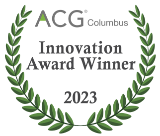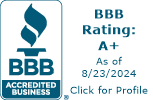When it comes to properly disposing of prescription drugs and other pharmaceuticals, “out of sight, out of mind,” might be most people’s first instinct. Flushing expired or unwanted medications may seems like a quick and easy solution. Unfortunately, flushing is not an environmentally friendly choice, nor is it recommended by plumbers in Cape Coral. Here are several reasons not to flush, and some alternative ways to discard those unwanted medications.
Water Treatment Plants Can’t Handle Drugs
Simply put, water treatment plants aren’t built to remove pharmaceuticals from water. Even if treatment plants successfully remove some of these chemicals, they are not built for that specific purpose. According to an article in Scientific American from 2013, treatment plants only remove about half of the prescription drugs found in sewage.
According to the article, scientists studied 42 drugs that are commonly found in the Great Lakes of the US and Canada. In addition to substances like caffeine and over-the-counter drugs like Tylenol, the article reports that anti-seizure medications, antibiotics, and anti-inflammatory medications were commonly found in waterways. While sewage treatment plants can remove some of these drugs, trace amounts are more difficult to catch.
Water treatment plants can’t fully eliminate these chemical contaminants, so any medications flushed down sinks or toilets are bound for our water sources, including rivers, coastal areas, groundwater, and ultimately our drinking water.
Pharmaceuticals Have Adverse Ecological Effects
According to the US Environmental Protection Agency (EPA), pharmaceuticals found in US waterways have been proven to have adverse ecological effects. The exact effects of these substances on humans are unknown, but their effects on wildlife suggest that drinking water contaminated with pharmaceuticals and other chemicals could be harmful to humans.
Ecological effects of pharmaceuticals have been detected in both the lab and the wild. Even trace amounts of certain chemicals can have an effect on certain species and ecosystems. For example, trace amounts of the psychiatric drug Zoloft make fish less anxious-a bad thing when fish need to avoid predators.
Traces of antibiotics in the water supply can lead to antibiotic resistant bacteria, which can harm fish and their whole ecosystems. Traces of estrogen from birth control pills have caused male fish to develop female characteristics, causing their mating practices to go awry.
The effects of tainted drinking water on humans aren’t as easy to trace, but studies have shown that exposure over time could have similar effects on humans. Trace pharmaceuticals are particularly dangerous for vulnerable groups, such as pregnant women, the sick, and the elderly.
For example, people already taking medications could see unusual or adverse interactions with medications found in drinking water. Pregnant women who normally avoid certain drugs might accidentally ingest contaminated water, causing fetal issues. These human effects have not been proven, but the existing science certainly suggests they are possible.
Contamination is an Expensive Problem
Unfortunately, the issue of water contamination by pharmaceuticals is not easy to solve, and it can be expensive. In 2004, the EPA estimated that drinking water systems across the US would need to spend more than $150 billion over a period of 20 years just to keep our drinking water clean and safe. This is estimate is probably conservative, especially considering the growing evidence of pharmaceutical contamination.
Water systems will have to spend a lot of money to keep pharmaceuticals out of our water. The EPA claims that no municipal water treatment plants in the US are built specifically to remove these chemicals. Therefore, water infrastructure will need to be updated to combat this growing problem. Flushing pharmaceuticals ultimately has an effect on your wallet, since updated water infrastructure will rely on higher taxes and utility bills.
What to Do with Drugs Instead of Flushing
It’s worth noting that, while government agencies generally agree you shouldn’t flush pharmaceuticals, the FDA keeps a short list of medicines to flush. These medications could harm children, pets, and even adults who take them, and flushing is the best way to prevent accidental overdose. The list includes narcotics like OxyContin, Demerol, and morphine, among other drugs.
While it is very important to keep dangerous drugs out of reach of children, pets, and others, flushing should be a last resort for unused, unwanted, or expired drugs on the FDA’s list. Drug take-back programs are a good option to consider, if one is accessible to you. These programs allow you to surrender medications to local law enforcement agents, who usually incinerate them along with confiscated drugs.
For less dangerous drugs, like over-the-counter medications or prescription medications not recommended for flushing, the FDA has specific instructions for disposal. They first recommend following the instructions on the drug’s packaging. Many drugs have their own disposal instructions, and you should always follow those first.
Second, they recommend removing drugs from their packaging and mixing them with an undesirable substance like coffee grounds or kitty litter, then sealing the mixture in a bag or can. This method has two goals: one, to deter anyone who might find the drugs in the trash, and two, to prevent the drugs from leaking out.
That said, sending drugs to a landfill can still have adverse effects on water, even if measures are taken to seal the drugs in a container. Contaminants in landfill trash can seep into groundwater, which poses ecological threats. By far the best option for disposing of unused, unwanted, or expired drugs is through a drug take-back program.
If you are in need of consulting with a technician on your plumbing needs, look no further than The Eco Plumbers. We are the professionals you can trust.












